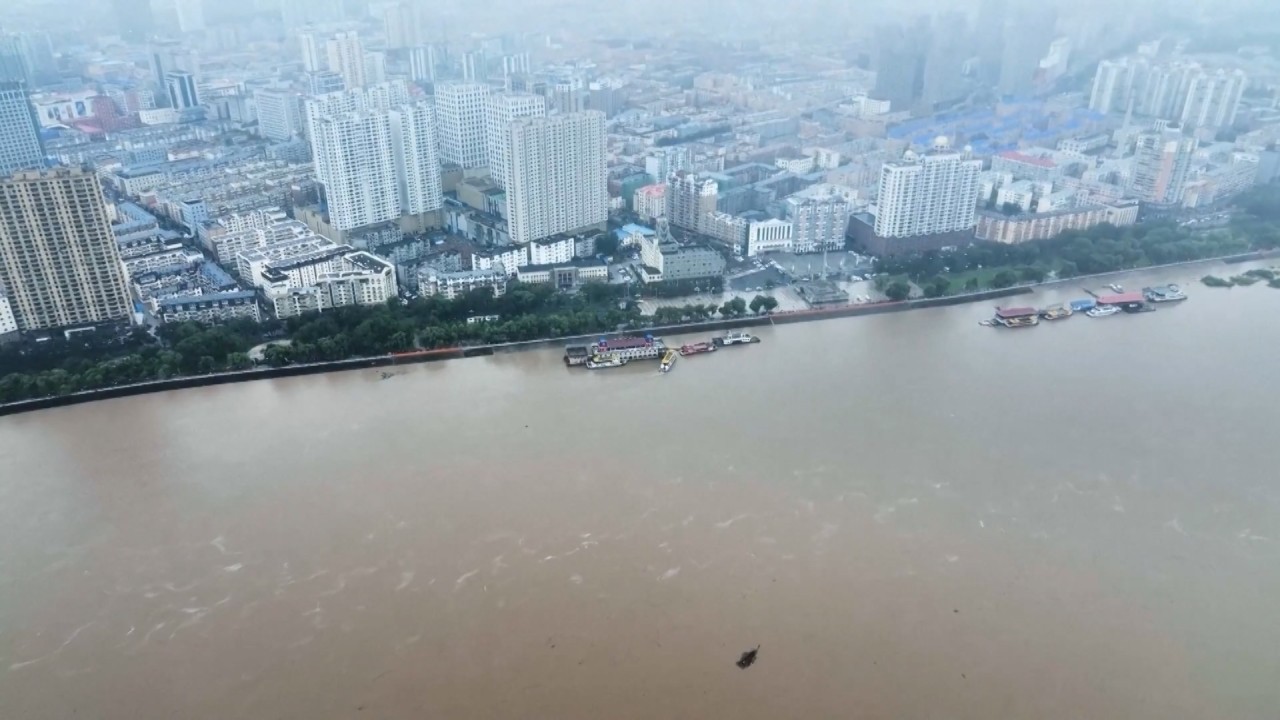
Chinese President Xi Jinping visits flood damaged crops and homes after Typhoon Doksuri threatened northern food bowl
- In wake of heavy rainfall last month, Xi inspects rice crops and talks to citizens, offering sympathy and encouragement, says state media
- Shangzhi in Heilongjiang has had 19 consecutive years of bountiful harvest but there is little expectation of a harvest this year

The state media outlet said Xi, when learning of victims’ losses and current needs, expressed sympathy and encouraged them to bolster their confidence to overcome difficulty.
Xinhua said the president expressed hope that citizens could soon resume normal work and life, and that their lives would continue to improve.
According to a video circulating on Chinese social media platforms, Xi told a group of villagers that when people encountered difficulties in China, they benefited from “the superiority of our socialism”, with the country giving its full support.
“I hope the disaster relief and reconstruction work is successful and smooth,” he said in the video.
The previous day Xi also visited Mohe, which the northernmost city in China, according to state broadcaster CCTV, and toured a nearby forest in the Greater Khingan Mountains were he told local rangers to strengthen efforts to prevent forest fires.
He also visited Beiji village, to see how the locals have benefited from forest prevention work, rural special industries and boutique hotels, hailing it as a successful model of rural revitalisation, a key rural policy he is driving.
He also visited Harbin Engineering University, which has close ties with China’s military, on Thursday. Urging the university to uphold its military tradition, Xi told the students and researchers there to work hard to boost China’s technological self-reliance and national defence science.
It is Xi’s third visit to Heilongjiang since he became China’s top leader in 2012. In his previous two visits in 2016 and 2018, Xi stressed Heilongjiang’s critical role in China’s food safety and environment protection. He also called on the rust-belt province to work harder to revitalise its industrial capabilities.
Shangzhi is a major agricultural area in Heilongjiang, known for its rice, soybeans and corn production.
Before Typhoon Doksuri, it had had 19 consecutive years of bountiful harvest. But given that agricultural land was severely damaged by the flood, there is little expectation of a harvest this year, according to Thepaper.cn, a Shanghai news portal.
According to a report by the Shangzhi municipal government on August 4, it experienced the heaviest rainfall since 1957, and was judged to have exceeded the once-in-a-century level. Across the city that week, school and work were suspended.
Since Typhoon Doksuri made landfall in Fujian in southeastern China on July 28, severe flooding has killed at least 61 people in Beijing and neighbouring Hebei province, displaced millions and caused havoc in Beijing and several surrounding cities.


